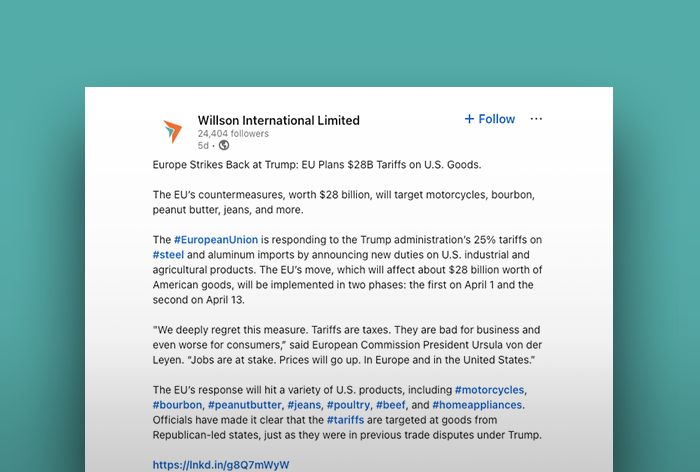


Tariffs are taxes or duties imposed by a government on goods and services imported into or exported out of a country. They are typically used to:
Types of Tariffs
Effects of Tariffs
Tariffs are a key component of trade policy and can significantly impact global and local economies.
Tariffs are ultimately paid by importers, but their cost often gets passed along the supply chain, impacting different groups:
Disclaimer: The information provided on this website is for informational purposes only and is offered without liability on the part of Willson International. It is based on the best available information; however, the tariff environment is rapidly changing, and some details may become outdated. Any advice and/or information contained in this communication is not binding on U.S. Customs and Border Protection (CBP) or the Canada Border Services Agency (CBSA), nor does it satisfy the requirements for “reasonable care” in conducting your customs business. For the most up-to-date and accurate information, please contact your customs broker or trade advisor.